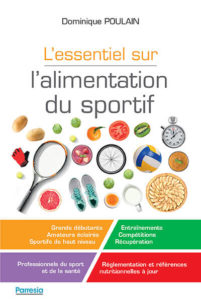Répercussions spécifiques de l’alimentation et activité physique pendant la croissance
Diet and exercise during growth have site-specific skeletal effects : a co-twin control study
Auteur(s): S. Luliano Burns, J. Stone, J.-L. Hopper, E. Seeman
Réf.: Osteoporosis Int, 2005, Vol 16, Iss 10, pp 1225-1232
Adresse: Stone J., Univ Melbourne, Ctr Genet Epidemiol, Parkville, Vic 3052, AUSTRALIA
Mots clés: BONE MINERAL CONTENT; CALCIUM; EXERCISE; GROWTH; PROTEIN; TWINS; BONE OSTEOPOROSE; FRACTURE; EXERCISE; CHILDREN
Résumé : Exercise and improved nutrition offer safe, low-cost and widely applicable approaches to potentially reduce the burden of fractures. We conducted a cross-sectional study of 30 monozygotic and 26 dizygotic male twin pairs, aged 7-20 years to test the following hypotheses: (1) Associations between bone mass and dimensions and exercise are greater than between bone mass and dimensions and protein or calcium intakes; (2) exercise or nutrient intake are associated with appendicular bone mass before puberty and axial bone mass during and after puberty. Total body and posteroanterior (PA) lumbar spine bone mineral content (BMC) and mid-femoral shaft dimensions were measured using dual energy X-ray absorptometry (DEXA). Relationships between within-pair differences in nutrient intake (determined by weighed-food diaries) or exercise duration (determined by questionnaire) and within-pair differences in BMC and bone dimensions were tested using linear regression analysis.
In multivariate analyses, within-pair differences in exercise duration were associated with within-pair differences in total body, leg and spine BMC, and cortical thickness. Every-hour-per-week difference in exercise was associated with a 31-g (1.2%) difference in total body BMC, a 10-g (1.4%) difference in leg BMC, a 0.5-g difference in spine BMC and a 0.1-mm difference in cortical thickness ( p < 0.01- p < 0.1). A 1-g difference in protein intake was associated with a 0.8-g (0.4%) difference in arm BMC ( p < 0.05).
These relationships were present in peri-pubertal and post-pubertal pairs but not in pre-pubertal pairs. Exercise during growth appears to have greater skeletal benefits than variations in protein or calcium intakes, with the site-specific effects evident in more mature twins.
Conclusion : Etude retrouvant des interactions étroites entre la qualité de l’alimentation et les répercussions sur la composition corporelle, la minéralisation osseuse. La pratique physique en période de croissance (phase péri et post pubertaire), semble avoir des effets positifs sur la qualité de la masse osseuse.
Fiche Pratique
La moitié de mon assiette en fruits et légumes (Pdf, 1 page, 265 ko).
Source : www.aprifel.com
Santé et Performance

Notre Société savante a pour mission de promouvoir la Nutrition du sport, dans un objectif de protection de la santé, de recherche de performance, et de prévention des conduites addictives.
Nous proposons des colloques et des journées de formation, fondés sur une actualisation des connaissances scientifiques...
> Santé et Performance

